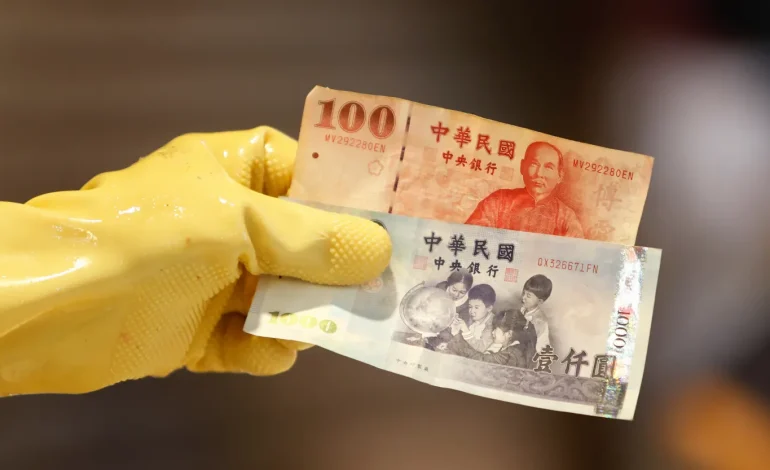The Taiwanese dollar weakened sharply on Tuesday, pulling back more than 3% against the US dollar after an extraordinary two-day surge that had pushed it to three-year highs.
Monday’s rally marked the strongest daily gain in the currency since at least 1981, according to data from LSEG.
The recent volatility has placed the Taiwan dollar at the center of discussions about global currency realignments and raised questions about the potential role of foreign exchange in ongoing trade negotiations between Taiwan and the United States. Despite official denials, analysts remain watchful for signs of behind-the-scenes currency coordination.
Much of the Taiwan dollar’s recent appreciation was driven by a combination of market forces. Exporters rushed to convert US dollar reserves amid a weakening greenback, and Taiwanese life insurers, some of Asia’s largest holders of US bonds, ramped up hedging activities on their US dollar exposures. According to analysts, the Taiwanese central bank’s notably light-touch approach during this period also fueled speculation that authorities were tolerating — or even encouraging — the currency’s rise.
However, at a press conference on Monday, Central Bank Governor Yang Chin-long stated the institution had intervened to temper “excessive” capital inflows and rejected claims that foreign exchange policy was being used as a bargaining chip in trade discussions. Taiwan’s Office of Trade Negotiations also dismissed any link between currency movements and recent tariff talks in Washington.
Still, market participants are skeptical. Stefan Angrick, an economist at Moody’s Analytics, noted that the central bank’s muted presence in the market raised the possibility of tacit approval of currency strength. Analysts at Invesco and BNP Paribas echoed the view that the recent sharp moves could hint at a quiet currency realignment.
The appreciation has implications for Taiwan’s vital export sector, particularly its world-leading technology manufacturers. Shares in Taiwan Semiconductor Manufacturing Co. (TSMC), the island’s largest company, fell for a second consecutive day. Analysts estimate that every 1% appreciation in the Taiwan dollar reduces TSMC’s operating margin by around 0.4 percentage points. While some companies, like TSMC, hedge their foreign revenues, the strength of the local currency still poses challenges for the export-driven economy.
Beyond Taiwan, the dollar’s weakness and the Taiwan dollar’s surge sent ripples through Asian foreign exchange markets. Other currencies, including the Chinese yuan, South Korean won, and Singapore dollar, also rallied in early May. Some analysts see this as part of a broader trend of de-dollarization, spurred by geopolitical shifts, US tariff policies, and diminishing returns on US assets.
Concerns are also mounting over Taiwan’s life insurers, who collectively hold nearly $767 billion in foreign assets, most of them in US bonds. If hedging activity increases or assets are repatriated, analysts warn that further pressure could build on the dollar, potentially affecting US bond markets and interest rates.
Despite the central bank’s assurance of stability and denials of currency-related negotiations, investor behavior suggests lingering uncertainty. Brent Donnelly, president of Spectra Markets, summed up the sentiment:
“USD/TWD is a canary in the coal mine. Asian demand for US dollars and central bank support for the greenback are waning.”










The latest news in your social feeds
Subscribe to our social media platforms to stay tuned